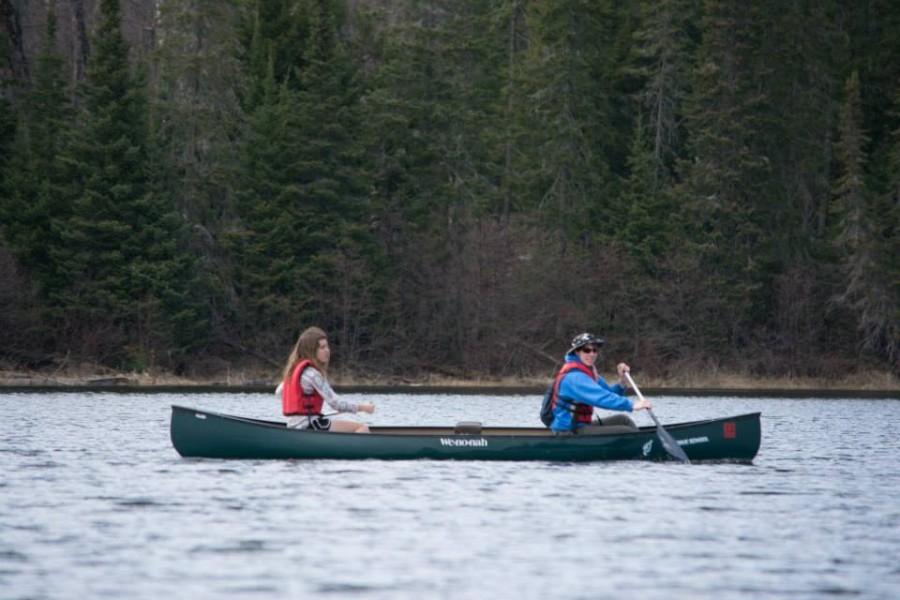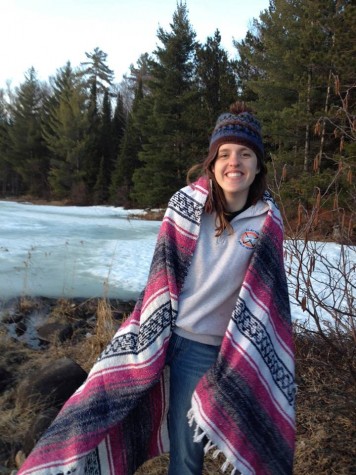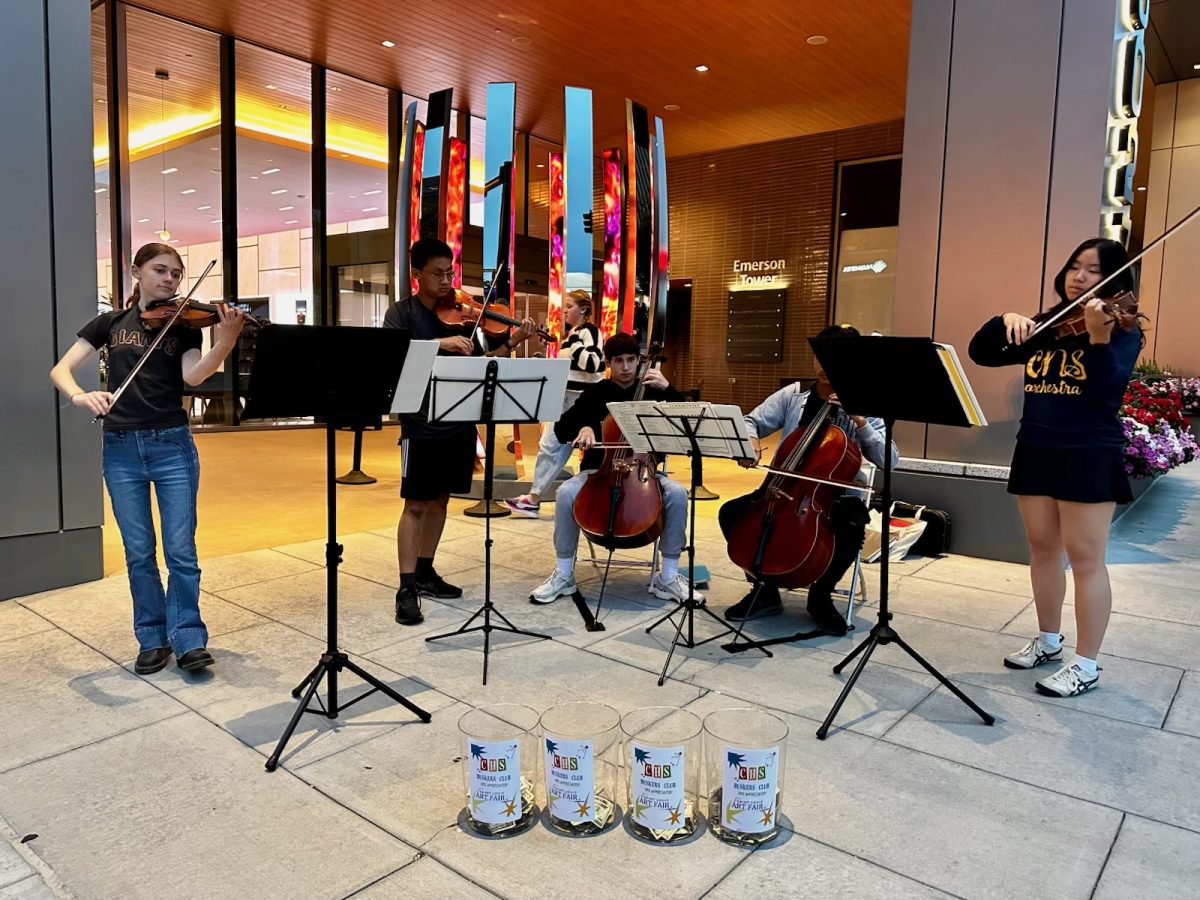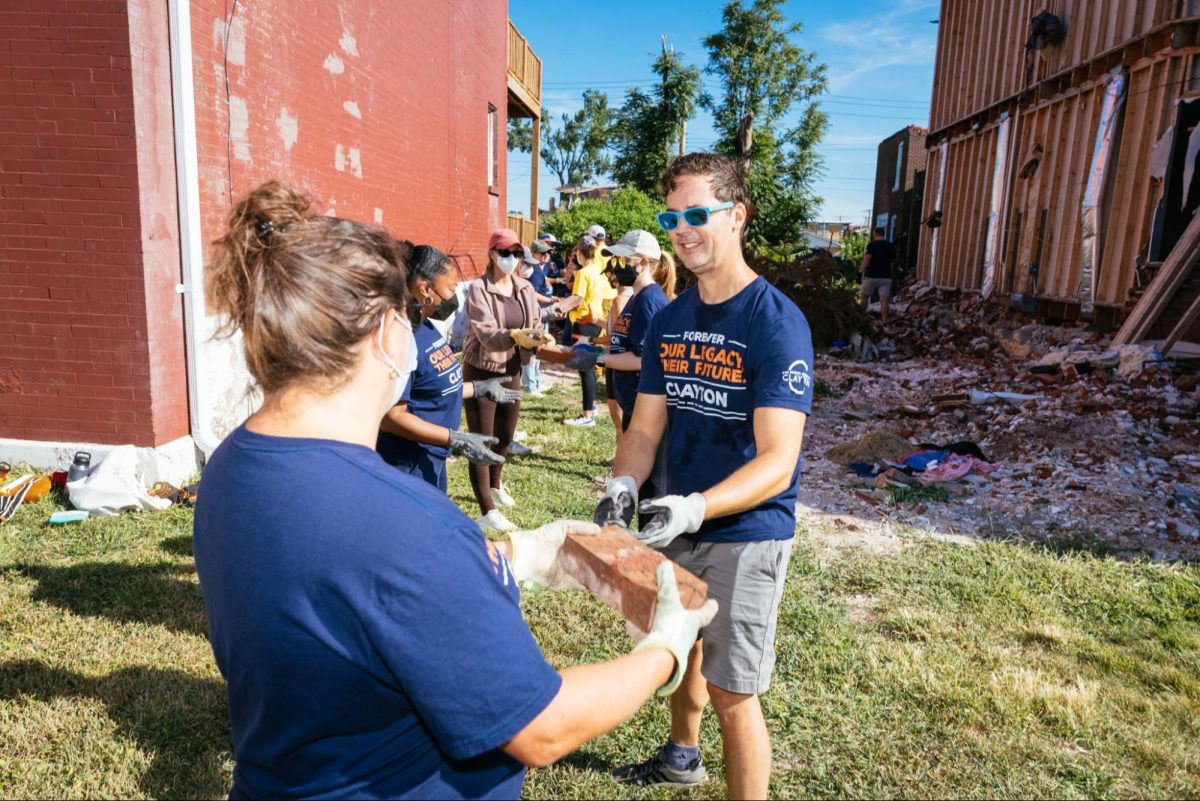Semester Schools
Marina Henke and a fellow student canoe in northern Wisconsin. Classes that took students on the water were not uncommon.
September 2, 2014
With a map and compass, my group of 10 stepped out of our classroom. Snow was coming down thickly, and as we reached the end of the road we donned snowshoes. Into the woods we went, passing underfoot hemlock trees and stocky white pines.
We walked out onto the middle of a frozen lake and pulled soggy papers from our coat pockets. As a camp stove began boiling water, class began.
Last spring I attended an environmentally-based semester school in the Northwoods of Wisconsin. Conserve School brings together 60 students to live and to learn on a campus with roughly the same amount of land as Forest Park.
Conserve School is not the only one of its kind. The term semester school might be uncommon, but these establishments are growing in popularity. When they attend semester schools, high school juniors leave their sending school for one semester to attend a school that’s designed around a specific academic focus. Class sizes range from 12 to 60.
My school was focused on environmental stewardship, but semester schools are just as varied as the students that attend them. Coastal Studies for Girls, located in Maine, specializes in leadership and marine science. The Woolman Semester School focuses on peace, justice and sustainability. Some students will have lessons in the middle of the woods, and others will spend a class walking the streets of New York City.
More than just learning how to snowshoe, my experience this past spring was a lesson in valuing alternative approaches to education.
Prior to applying to Conserve, I generated countless reasons against attending. All I saw were missed AP tests and endless conflicts with future schedules. Ultimately, as a high schooler it can be scary to do something different. In fact, in the competitive halls of CHS, I think it is too often that students think different approaches can be inferior approaches.
What ultimately made this experience so beautiful was how vastly different it was from a typical high school experience.
Arriving to four feet of snow and subzero temperatures on the first day of school, I was certainly not in my element. I had never been on skis. I had never snow shoed. I had never tapped a maple tree.
Teachers expected my classmates and I to work together constantly. Classes were more demanding in what we did than they were in the number of hours of homework we completed. Teachers encouraged us to step out of our comfort zones and to engage in education in a way that we never had.
I found this mentality very different from typical high school. Time away from CHS gave me an opportunity to appreciate the various ways of learning. In a competitive environment like Clayton, it is easy to get into the mindset of “one-size-fits-all” education.
Engaged learning does not just spread from the Northwoods of Wisconsin. Engaged learning comes not only from active participation, but an eagerness to come to school each day. Classes might not be held on the middle of a lake, but there is little reason not to be attracted to a form of education that falls outside of one’s comfort zone.





![“I love working with students, that's why I decided on being a high school teacher. I was going to go the University route, but it's a different feel[ing]. Working with students is what makes it fun, keeps it alive, keeps me, trying to connect with students about my passion with ancient Rome and Greece and how they overlap, and how the stuff we do in class impacts their lives. That's kind of the goal I have, is having them see themselves, students in this larger scope of history from 2000 years ago, and how you're part of that now. ”
- Matthew Crutchfield, CHS Latin teacher](https://www.chsglobe.com/wp-content/uploads/2025/09/image2-3-e1757531718144-1200x872.jpg)
!["It's really hard to make friends in Clayton high school if you're a newcomer. Everybody already knows each other, and they have established friendships for many years. My goal is always to make my space a safe one for them to take risks, [and] relax." Nancy Gamble, English Language Specialist](https://www.chsglobe.com/wp-content/uploads/2025/09/image1-e1757625469759-1200x843.png)



